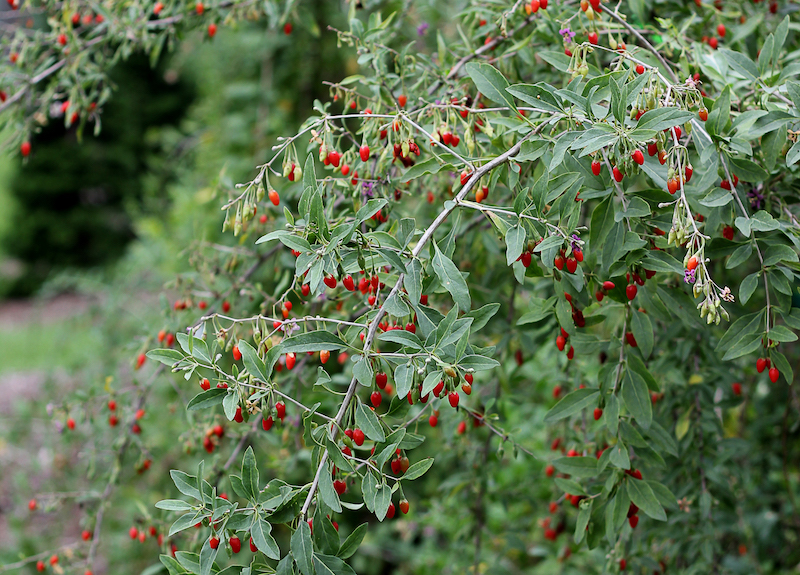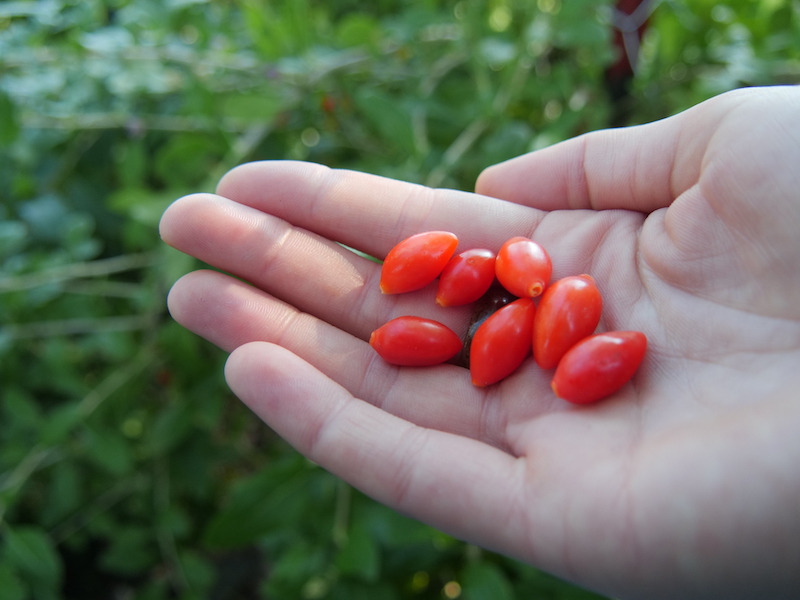Commonly cultivated in parts of Asia, and prized for its health benefits, goji berry is a relative newcomer to the home-gardening scene in the United States. Members of the genus Lycium, these plants are small shrubs that usually grow 3 to 6 feet tall in cultivation. They are relatives of tomatoes, so they have many care requirements in common with their more widely grown cousins.
Sometimes also known as wolfberry, boxthorn, and matrimony vine, these plants are fairly easy to grow. Once established, they are drought tolerant and require little to no fertilizer. Home gardeners can expect to start harvesting fruit the second year following planting.

Caring For Goji Berries
Adequate sunlight, appropriate soil, the right amount of moisture, perhaps occasional fertilizing, and routine pruning are the most important factors in caring for this plant. Goji berry fruits develop on the current year’s wood. So, regularly pruning to encourage new growth will both encourage good airflow and light penetration, and increase yield.
Begin pruning following the first year of growth. During the dormant season, prune out any weak or damaged branches and cut side branches back by 6 to 18 inches while also removing the top few inches of growth. After a few years, the goji berry bush will start to send out suckers; Promptly remove these to encourage shrub growth. A three-inch layer of organic mulch spread over the root zone will suppress weeds, conserve moisture, and regulate root zone temperature.
Planting Goji Berries
Goji can tolerate some shade but prefers full sunlight. They can also tolerate somewhat harsh conditions and a range of soil types but will do best in a light loam. The soil should be neutral to slightly alkaline; in acidic soils, the plant will suffer. Heavy clay soils that lead to waterlogging will also cause the plant to suffer; in this situation, take care to work ample organic matter into the site prior to planting.
These plants stay fairly compact when pruned well. Look at the mature size for the specific cultivar and make sure to leave enough space to allow for easy harvest, typically four to five feet in all directions. The best time to plant goji berries is in spring following the last frost.

Watering Goji Berries
Goji berries are fairly tough and drought tolerant once established, but new transplants will require regular water for establishment. As a general rule, make sure the plant receives one inch of water weekly through rainfall and supplemental irrigation if needed. The most efficient way to water is by using drip irrigation or soaker hoses that slowly apply water over the root zone at a low rate.
Like their relatives, tomatoes, goji berries are prone to blossom-end rot. This localized calcium deficiency appears on the blossom end of fruit as a result of inadequate water or problematic wet-dry cycles in the soil.
Fertilizing Goji Berries
In fertile soil, goji berries may require little or no fertilizer, or only during the first year to encourage establishment. Excessive or unnecessary fertilizer applications can cause excessive vegetative growth and lowered fruit quality. As a general rule, apply a balanced fertilizer like a 16-16-16 formula at the lowest recommended label rate about a month following planting, or when new growth begins to appear. In subsequent years, it may work well to apply a low rate of fertilizer divided into three separate applications timed for budbreak in spring, when flowers appear, and, finally, when fruit is developing.
Growing Goji Berries In Pots
Gardeners with limited space or heavy clay soils may be happy to learn that it is possible to grow goji berry bushes in pots. However, yield may be less than for plants grown in-ground. Make sure any container has ample drain holes and use high-quality, well-draining potting soil.
Plan to repot the plant every two to three years into a slightly larger container each time. After a few years, the goji berry should be in a container with a diameter and depth of at least 18 inches and a capacity of at least five gallons. The deeper the container, the better. This will allow the extensive root system to develop. Plants in containers are more prone to drying out than their in-ground counterparts, so they will need regular monitoring and irrigation.

Harvesting Goji Berries
Goji berry plants will begin to produce fruit two years after seeding or one year following the transplant of a young plant. Under ideal conditions, it will take about four to five years for a goji berry to achieve maximum yield. The fruits appear in summer through fall, or about 35 days following full bloom, and they must be harvested by hand or by shaking. Harvest fruit by pulling slightly to the side to reduce the amount of stem that comes off with the fruit. Take care, as bruised berries turn black.
Each plant can be expected to produce two to six pounds of berries. Berries are often dried, but can be stored in a refrigerator for fresh eating for up to two weeks.
 |
Author Angela Ryczkowski - Published 3-14-2023 |
